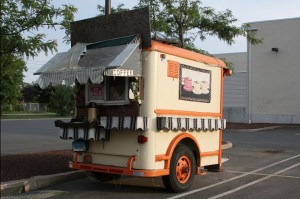Is it better to join a coffee shop or to open your own coffee shop?
When Starbucks and Costa entered the Chinese market on a large scale, domestic coffee chains were losing ground. Shangdao Coffee, one of the leaders of domestic coffee, closed half of its stores in Chengdu, but now there are only 10.
When Starbucks and Costa enter the Chinese market on a large scale, it is absolutely fashionable for ordinary people to taste a cup of mellow coffee in Shangdao Coffee. But nowadays, it is common to meet Starbucks on the corner of downtown, but it is even more difficult to meet Shangdao coffee. For a while, Shangdao coffee has gradually faded out of people's sight.
Shangdao Coffee, due to poor management, high rent, and the risks hidden in the joining model, once served as a gold-lettered signboard in the coffee chain, but staged a "closed drama" across the country. In Chengdu, Shangdao Coffee, which entered the market in 2006, has shrunk from a peak of more than 20 stores to only 12, with half of its closure and only four left on the third Ring Road. It used to be a trump card in the coffee chain, but now it can hardly be seen in the third Ring Road of Chengdu. At present, there are four stores open in the third Ring Road of Chengdu, including Shuhan Road, Zhonghai Jincheng, SUNING Square and Zhonghai International Community. "other stores opened early, and now they either set up their own brand after the expiration of the contract or close the store on their own." Wu Yuhao, director of the development department of Shangdao Coffee Chengdu District, said, "Shangdao Coffee entered Chengdu in 2006 and has opened more than 20 stores. Now there are 10 stores in the city, and two stores are preparing to open this year, making a total of 12 stores." In other words, half of Shangdao's store in Chengdu was closed in just a few years.
When I came to the store on Renmin South Road yesterday, I found that the storefront had changed its owner. According to the surrounding shopkeepers, in 2008, the section of Renmin South Road closed the shop soon because of the construction of the subway, which affected the traffic in front of the shop. "there is another reason," Wu Yuhao told reporters. "We do not fully understand the Chengdu market and do not set up chess and card rooms in the storefront; in addition, Chengdu citizens do not have a high degree of recognition for the newly introduced Western-style coffee."
In the national market, Shangdao coffee life is not easy, frequently encountered shop closure storm. Take Tianjin as an example, Shangdao Coffee reached the peak of opening stores in Tianjin in 2010, with more than 70, but now there are only 40 or so left.
When it comes to the reasons for the tide of shop closures, according to Wu Yuhao, Shangdao Coffee has some omissions in its shareholder business model. "in some stores in Chengdu, there is even a situation in which four shareholders are in charge of each of the four quarters. Without a unified business philosophy, the management of the company is like a plate of loose sand, and it is naturally impossible to achieve ideal business results. " In addition, the headquarters of the franchise store management is not strict, resulting in poor efficiency.
At the same time, Shangdao's joining model has not only helped it quickly occupy the domestic market, but also been questioned. Wu Yuhao admits that the relationship between the headquarters and the franchisee is not close, and there are situations such as the head office does not understand the operation of the franchise store, and the franchisee's mistrust of the franchise store. The dispute over stored value cards is also a source of many disturbances. It is understood that the Shangdao Coffee headquarters does not allow franchisees to sell stored value cards, but the head office does not have time to take full account of it. In recent years, many cities have joined shopkeepers to run away, and customers' stored value cards have been invalidated. "but every franchisee is an independent legal person, and we can't manage every aspect of finance." Wu Yuhao said.
In addition, although the domestic coffee culture is taking shape, drinking coffee has not yet become the norm for the Chinese. According to statistics, the annual per capita coffee consumption in China is only more than four cups, while that in neighboring Japan and South Korea has reached 340 cups and 300 cups. The figures in Europe and the United States and other countries are even more staggering.
Shangdao coffee also has a crux that can not be ignored, that is, "rent". "the rents of shops in Chengdu have been very high, and there have been some reductions in the past two years." Wu Yuhao gives an example: "in the past two years, the rent on the fourth floor of Raffles was NT $300 to NT $400 per square meter per month. This is basically the reason for the closure of stores in the third Ring Road. Now Shangdao no longer set up shop within the third Ring Road, and all the stores you see within the third Ring Road were opened before last year. The rent for the shop on Shuhan Road is between 150 and 160. "
Rising rents are a common problem for coffee chains, but the burden on Shangdao coffee is particularly heavy. According to the Shangdao brand management program, the franchise store area is required to reach more than 600m2, and some even reach 1000 sq m, equivalent to 2-3 Starbucks, so Shangdao is very sensitive to rental costs. Shangdao Coffee has long foreseen this problem. Liu Zhengxiang, director of the office of Shanghai Shangdao Coffee Co., Ltd., once admitted: "in the case of Shangdao Coffee, there is often a greater demand for storefronts. The annual rent of an old shop in Shanghai may be about 1 million."
In order to resist the pressure of rent, Shangdao Coffee has to reduce the area of stores in first-and second-tier cities, while franchisees who cannot resist the pressure of rent have no choice but to close.
When Shangdao coffee is falling back in the coffee chain market, other foreign coffee brands are pressing the border and seizing the market. Nowadays, walking on Chunxi Road in Chengdu, you can meet Starbucks around the corner and you can see Costa when you enter the mall. Currently, Starbucks operates more than 1001 stores in more than 60 cities in mainland China. For Starbucks, China is Starbucks'"second home market", striving to realize its vision of operating 1500 stores in mainland China by 2015. Like Starbucks, Costa has ambitions to compete for market share. Costa entered China 10 years later than Shangdao Coffee, but it has grown into the fastest growing coffee chain in China, expanding at an average rate of 2-3 new stores a week, surpassing Shangdao in second place. In addition, Costa plans to open a total of 350 Costa coffee shops in Beijing and Shanghai, as well as in major cities including Shenzhen and Shijiazhuang by 2015. It is worth mentioning that, with the help of the Korean wave culture, the Korean coffee chain brand represented by Caffebene has also been outstanding in the past two years, actively entering the Chinese market.
"however, Shangdao Coffee is not without the opportunity to save itself." Li Wei, founder of Coffee time, said that at present, Shangdao Coffee has more than 1300 chain stores across the country, all over large, small and medium-sized cities, and many stores still show full vitality. "first of all, the positioning of the business model or leisure model needs to be clear. second, over the past decade, China's coffee consumption has continued to rise, with an annual increase of double digits, and the growth momentum of third-and fourth-tier cities is even stronger. So we can gradually shift the focus of joining to third-and fourth-tier cities."

Important Notice :
前街咖啡 FrontStreet Coffee has moved to new addredd:
FrontStreet Coffee Address: 315,Donghua East Road,GuangZhou
Tel:020 38364473
- Prev

Design concept of coffee shop decoration public space and workspace are integrated into one.
Nowadays, bars and cafes have a variety of interior decorations, but their commonness is to create a comfortable atmosphere. The project is unusual in that it has no attractive leisure area (and sometimes even deliberately avoided it). Its design intention is to create an environment for acquiring knowledge and to attract young people who are interested in applied science. The idea is to integrate the public space and the workspace.
- Next

Guidance on opening coffee shop and suggestion on profit model of entrepreneurial coffee shop
It seems that every founder has something to hide about the profit model of start-up cafes. Everyone's answers revolve around us selling coffee, we conduct activities, and we collect venue fees. There is no doubt that this way of making profits is too far-fetched. The lack of surplus capacity is the biggest injury to start-up cafes at present. Mixed with the Internet circle, has a financial background, started a business, and is the founder of a startup cafe.
Related
- What documents do you need to go through to open a coffee shop? coffee shop coffee shop certificate processing process
- How to purchase Coffee beans in small Cafe how to choose a suitable supplier for domestic Coffee supply Company
- How to drink Starbucks Fragrance White Coffee? how to make Australian White Coffee? what Italian coffee beans are recommended?
- The Story of Flora Coffee: the name of Flora Coffee Bean and the implication of the Flowers on Florna Coffee
- How much does a cup of coffee cost? How much is the profit of a cup of coffee? What is the profit of the coffee shop in a year?
- Yunnan small Coffee, known as "fragrant Coffee", introduces the characteristics of Alpine Arabica Coffee producing areas in Yunnan, China
- 2023 latest Starbucks full menu price list how much is a cup of Starbucks coffee what is better to drink the most popular hot and cold drinks recommended
- Starbucks different kinds of Coffee Price list Starbucks menu 2023 Top Ten Best drinks in Starbucks
- Starbucks Spring praise Comprehensive matching Coffee Bean theme Story Packaging implication and taste description
- The cost of a cup of coffee latte American coffee cost price and selling price

